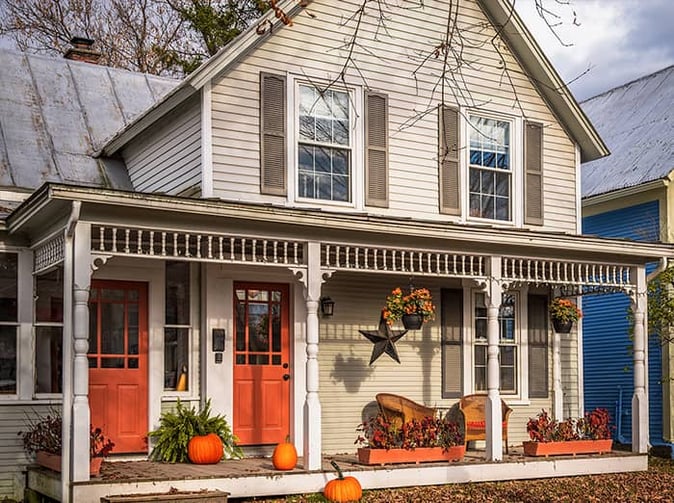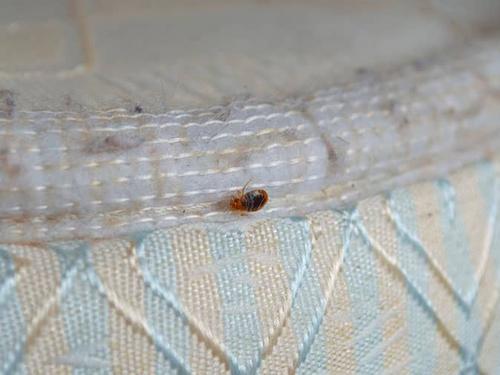Mice Problems in Old Homes
Many Colorado homeowners live in older homes and love their unique charm. However, with all their character, they also come with their own challenges—one of the most common being mouse infestations.

Why older homes are susceptible to mice
It’s not exactly fair to say that all older homes are likely to be infested by mice; however, older homes that have not been maintained, as well as others, are at greater risk. Age and construction often make older homes in Denver, Boulder, Colorado Springs, and Northern Colorado more vulnerable to mice infestations. Here are a few reasons why:
- Wear and tear caused by aging
Over time, the materials used to build older homes deteriorate, leading to gaps and cracks in walls, floors, and the entire house – from the bottom to the top. Mice can easily squeeze through openings as small as a dime, making it relatively easy for them to find their way inside. - Foundation shifts
The foundations of older houses tend to shift over time, creating small openings that mice often exploit. - Older building materials
Many older homes still have original or outdated building materials, including insulation made from organic materials such as horsehair. Not precisely a deterrent, rodents often use these materials to build nests.
Of course, the location of the house influences rodent activity
While our region is excellent for nature lovers, it also means that mice and other pests are always close. Older homes, especially those near open fields or wooded areas, are prime targets for mice (and rats) seeking shelter.
Signs your older home may have a mouse problem
If you suspect that mice have infested your older home, here are a few signs to watch out for:
- Mouse droppings
Small, dark droppings resembling rice grains are a common sign of a mouse infestation. You'll typically find mouse droppings in kitchen cabinets, pantries, under sinks, or along baseboards. They are also frequently found in attics and garages. - Chew marks
Mice are constantly chewing on something. They must keep their incisors from growing too long. Unfortunately, that leads to chew marks on personal belongings and building materials, including wood or plastic; they’ll even chew on live electrical wires, creating possible fire hazards. Mouse chew marks are also often found on items in cupboards and pantries, including cereal boxes and other food packaging. - Mouse tracks
As mice travel through homes, they leave behind footprints, tail marks, and grease smudges from their fur. Homeowners are likely to find these tracks, also called runways or trails, in basements, crawl spaces, attics, under or behind appliances, along walls and baseboards, and in storage areas. - Nocturnal noises
Mice are nocturnal critters, so if you hear scratching, scurrying, or squeaking sounds at night, especially within walls or ceilings, mice are likely the culprits. - Nests
Mice build nests using stolen materials like insulation, fabric, or paper. These nests are usually hidden in secluded areas like behind or under appliances, attics, or inside wall voids.
How do you tell the difference between old mouse activity and new?
Determining whether mouse activity in an older home is recent or from a past infestation can be a bit tricky. Thankfully, there are a few ways to distinguish between old and new.
- Fresh mouse droppings vs. old droppings
New mouse droppings are dark, moist, and shiny, while older droppings will appear lighter in color and crumble easily when moved. - New gnaw marks vs. old gnaw marks
New gnaw marks left by mice are usually lighter in color because the material they’ve chewed on has not had time to discolor with age. Older gnaw marks are darker and worn, blending in more with the surrounding material, thanks in part to dust and dirt buildup. - Fresh tracks vs. old tracks
Fresh mouse tracks are more distinct and noticeable, whereas older tracks may be faint and dust-covered, making them harder to see. - New nests vs. old nests
You can often tell the age of a mouse nest by looking at the materials used to build it. Newer nests will likely have fresh paper, insulation, or fabric, while the nesting materials from older nests will show their age. Also, older nests are more likely to be abandoned.
How to prevent mice problems in your home
Whether your old is a remnant of a previous time or brand new, you’ll want to ensure it is mouse-proof. Here are some ways you can deter mice from infesting:
- Seal off openings to prevent mice from getting inside
Any crack, gap, or opening on the outside of your house could be a potential entry point for mice and other Colorado pests. To close entrances, use caulk, steel wool, and other rodent-proof materials. - Make sure mice can’t access food
In addition to warm shelter, mice are always looking for food. Store food in airtight containers and clean up crumbs or spills promptly. Remember that your trash looks appetizing to hungry rodents, so be sure to take it out regularly and use exterior trash cans with tight-fitting lids. - Clear out the clutter
Mice love to hide in cluttered areas with little foot traffic, which also has plenty of nesting materials. Keep your home tidy, especially in closets, basements, attics, and garages. - Clean up your yard
Mice are attracted to yards with plenty of food sources and hiding spots. To discourage these rodents from visiting, you should eliminate food sources, such as fruit, bird seed, and pet food. Haul away leaves and yard debris to eradicate potential hiding and nesting spots, and trim back tree limbs and bushes so they don’t act as bridges to your home.
What to do if you discover mice in your old home
If you’ve noticed signs of mice in your home, contact EnviroPest today. We offer effective and ongoing home pest control services in Denver, Boulder, Colorado Springs, and the entire Front Range.
When you sign up for our Colorado’s Choice Smart Service, we will perform an initial inspection and treatment to address the existing pest problems. After that, we’ll return every season to prevent new infestations of insects and rodents.
Don’t put up with mice; contact the experts who have been providing expert rodent control for Colorado homeowners since 1965. Contact EnviroPest today!

Testimonials
GETTING STARTED IS AS EASY AS 1-2-3
REQUEST FREE ESTIMATE
Pest Solutions For Homes & Businesses
We understand that pest problems can be unsettling and frustrating, but the solution shouldn't be. For over 55 years, we've been helping folks right here in Colorado take care of ants, spiders, mice, mosquitoes, wasps, bed bugs, bats and most other creepy crawly things. We'll get there fast to solve the issue quickly and affordably - Guaranteed.



